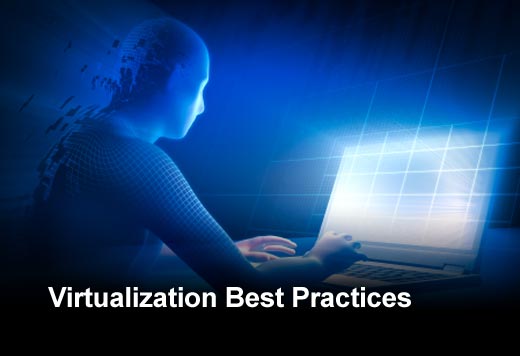Initially pursued because of the dramatic savings from server and storage consolidation that it makes possible, virtualization today is quickly becoming more than just a compelling technology that allows IT pros to do the same things better, faster and cheaper. Now described as a journey, virtualization is taking IT to new horizons from which whole new sets of opportunities are coming into view. According to Logicalis, an international provider of integrated information and communications technology (ICT) solutions and services, the possibilities with virtualization are so immense that a best-practices approach to implementation is no longer a luxury, but a foundation for success.
“Virtualization is not an IT strategy in and of itself,” says Kevin Gruneisen, vice president of data center solutions for Logicalis. “Virtualization allows IT to drive great utilization of infrastructure, to get more done with management resources, but IT pros still have a policy and process in place for recovery, for support, for patching…whatever it may be. You can’t just virtualize everything and hope for the best.”
Click through for seven best practices for virtualization from Logicalis.
Virtualization is more than just a compelling technology that allows IT pros to do the same things better, faster and cheaper. Getting the most from virtualization requires CIOs and IT managers to think in fundamentally new and different ways.
A successful virtualization strategy needs to be based on a critical assessment of where the company is and where it wants to go. Once the virtualization of an IT environment is underway, those points become very dynamic. New tools and new capabilities emerge routinely.
Too many organizations virtualize applications that would be better decommissioned. Just because something can be virtualized doesn’t mean it should be virtualized. Virtualizing a problem does not make it go away.
Change management procedures need to be refined and adhered to. “Rack ’em, stack ’em and forget ’em” can happen very fast in the virtualized environment.
Accurate cost accounting of both hard and soft costs needs to be clearly articulated to ensure the true cost of conducting business is understood. Identifying costs makes it possible for IT to charge business units for the resources they consume, or to at least show the CFO the role IT plays in bringing in revenue.
A successful virtualization campaign needs to involve more than just the IT department. It needs executive support for the policy and procedural changes it will require. Business leaders need to see how virtualization serves their goals. The finance people have to understand the value that virtualization represents to the bottom line.
Monitoring and management of virtualized IT environments require a broad range of sophisticated systems management tools, ITIL-based best practices, and a range of skills that literally spans all aspects of the IT infrastructure. If these are not core competencies, then outsource them to a trusted partner.










